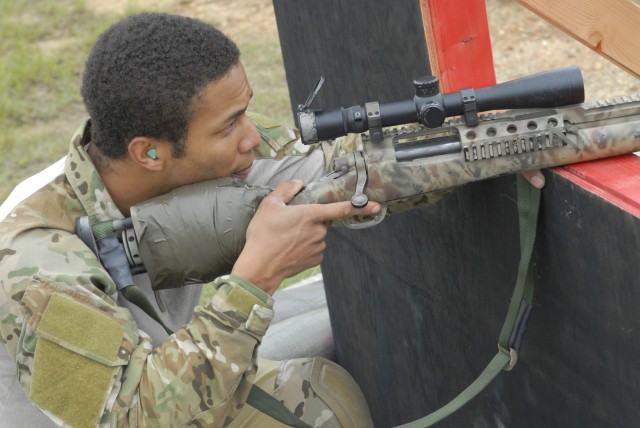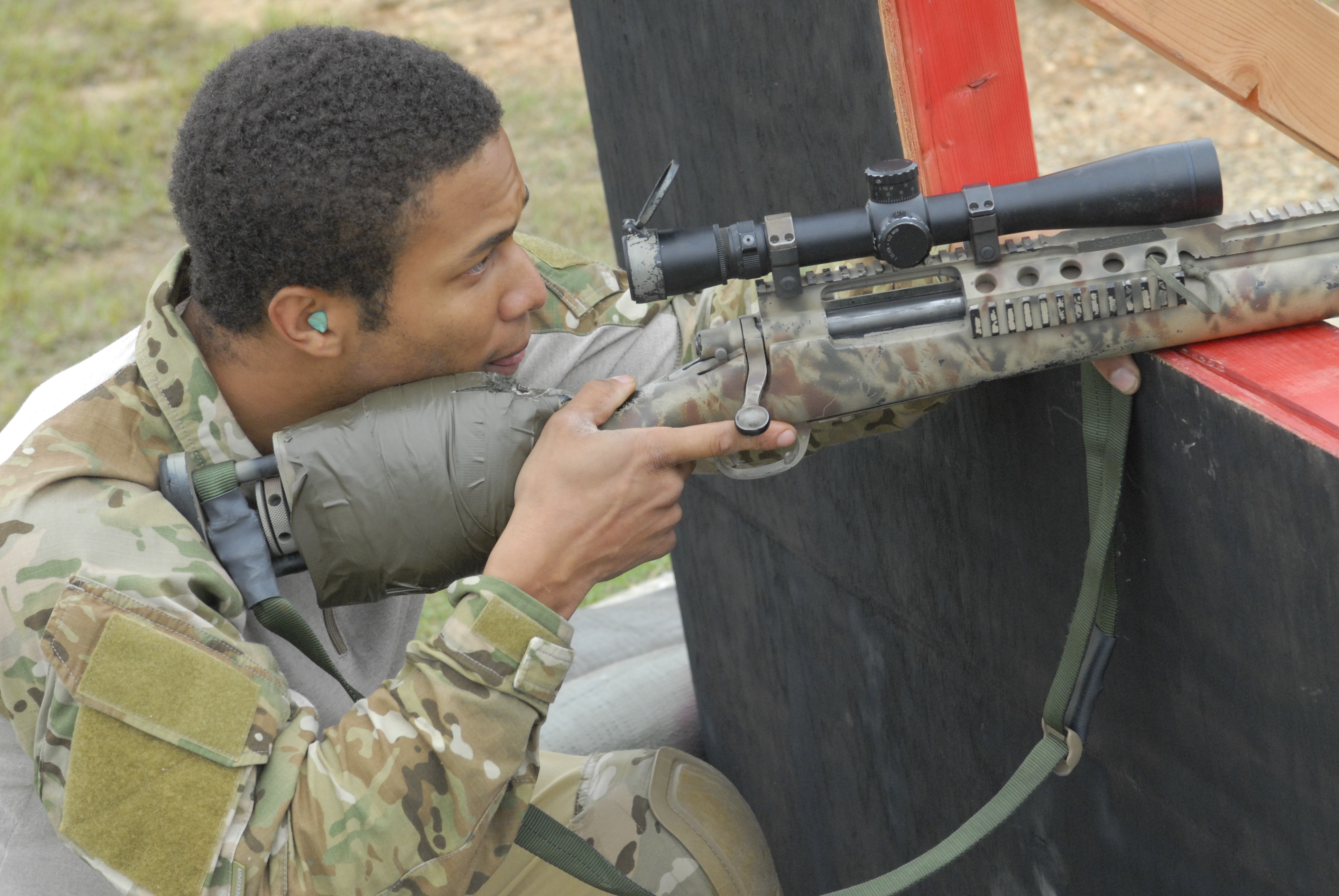FORT BENNING, Ga. -- One shot, one kill: It's the creed of every sniper.
More than 30 two-man teams from around the globe put that battle cry to the test - minus any lethality in this instance - on Fort Benning's ranges during the ninth annual U.S. Army International Sniper Competition, which began Oct. 15 and ended Thursday.
The field included duos from Ireland, Spain, Great Britain, the Air Force, Marine Corps and Army National Guard. SWAT teams from around the U.S. were represented, and there were state police tandems from Massachusetts and California.
A wide range of skills were tested as competitors fired rifles and pistols at fixed and moving targets, from various distances and positions, both day and night. An aerial shoot was among the events and most required sharp communication between shooter and spotter.
All the scenarios are relevant to real-world missions and operations, organizers said.
"Every one of these training events can be related to something in combat," said Sgt. 1st Class Robert Roof, the head noncommissioned officer at the U.S. Army Sniper School. "They face moving targets, unknown distances, a defensive shoot, moving at night, communicating on target in the dialogue shoot. If they don't have communication between the two, they're never going to hit their target."
Factors such as elevation and wind must be accounted for as snipers take aim at targets the size of a playing card from up 300 yards out in the "Dialogue Shoot."
"The spotter is telling the sniper what data to put on his scope," said Master Sgt. Mike Snyder, the officer in charge of the Sniper School. "The sniper pulls the trigger, but the spotter is doing pretty much everything else. They have to work well together to score any points or hit their targets."
In the "Shootout" and "Know Your Limits" events, competitors can score more points if they hit a 19.5-inch mark from 1,000 meters.
Sgt. Nicholas Irving and Spc. Ryan Flager, both from 3rd Battalion, 75th Ranger Regiment, just returned from separate deployments to Afghanistan and Iraq, respectively. They had three days to prepare for their first appearance in the competition.
"You have to be on your 'A' game," Flager said. "As soon as you screw up, the other team may be 50 points ahead.
"It's a job not everybody can do. You do a lot more math than you ever thought you'd do. There's a lot more thinking involved ... We love this stuff, and this takes it to the next level."
Irving, who's made two deployments as a sniper, said shooters can't always see the targets and that's why spotters are so crucial. The competition will improve his precision, he said.
"Overseas, they rely on you to make the key shots," he said. "You can see more than anybody else."
The event also allows snipers to learn from each other and share different ideas.
"I was here two years ago and it's very difficult, very technical shooting," said Sgt. Uel Fisher of the Irish Defence Forces. "By coming here, we're picking up tips on procedures currently used in Iraq and Afghanistan."
His partner, Sgt. Tommy Campbell, agreed.
"It offers a way for us to train up our own snipers, while also learning the lessons for deploying overseas," he said.
Staff Sgt. Brandon House and Staff Sgt. Jeffrey Haskin, both of the Arkansas National Guard, both instructors at the Army National Guard Sniper School in Little Rock, Ark., were among several first-time competitors.
"Being in the schoolhouse, you don't get to train as much ... The events are not difficult. It's just a matter of slowing down and knocking off the rust," Haskin said.
And staying on the same page, House said: "It takes good game planning. You've got to be able to talk to each other if you want to be successful here."
Related Links:
Day of the Sniper: 'Million dollar' shot clears road in Iraq
Multinational sniper course teaches more than just cover and concealment


Social Sharing